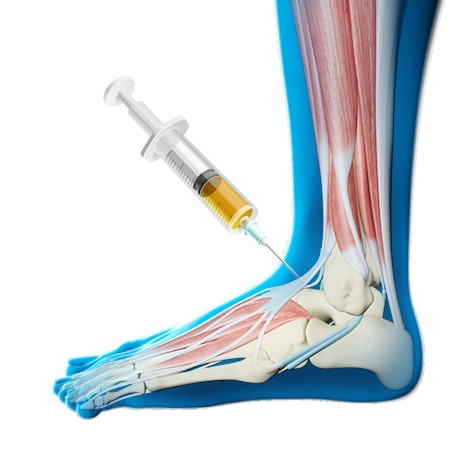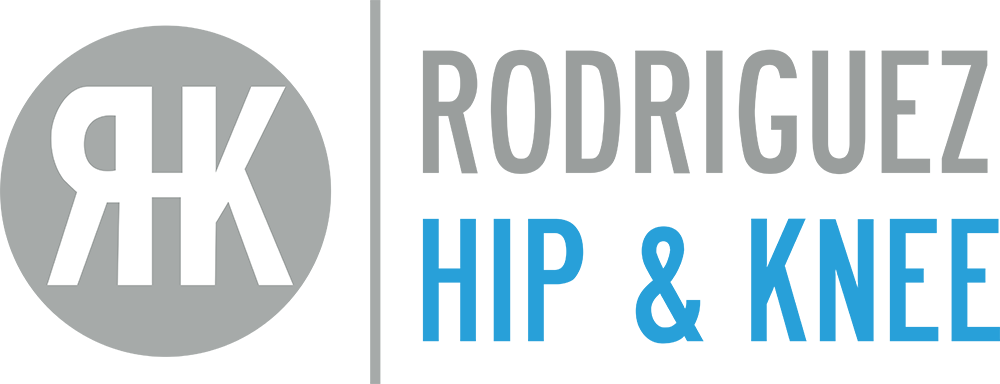PRP Injections
PRP (Platelet Rich Plasma) injection therapy is a form of biologic treatment using a patient’s own body (concentrated blood sample) to minimize joint pain and inflammation, as well as enhance healing and recovery. It involves taking a patient’s blood (60-120mL via a venous draw) and using a specialized centrifuge to isolate the layer rich in platelets. This concentrated sample is then injected into the treatment site under ultrasound guidance.

PRP therapy is an established non-surgical treatment used to treat various orthopedic injuries, including mild to moderate osteoarthritis and acute and chronic tendon injuries.
PRP is a concentrate derived from whole blood. A nurse takes venous blood (usually 60-120ccs) and spins it in a specialized centrifuge in order to generate a powerful concentrate that is injected into the injured area. The make-up of the concentrate is varied for different injuries/conditions. Some designed to induce a little inflammation, some to reduce it. The concentrated PRP is then injected under ultrasound guidance into the affected area.
The whole procedure takes about 45-60 minutes.
PRP is quite widespread, and its uses are expanding. It is a current treatment approved by Health Canada, but not OHIP covered. Most third party insurers also do not cover the cost. These treatments are not covered by insurance and are expensive. It is strongly suggested you meet in consultation with Dr. Rodriguez-Elizalde to discuss suitability and treatment before booking anything.
Platelet Rich Plasma (PRP) harnesses the body’s ability to heal itself through the aid of growth factors. The blood contains a rich reservoir of anti-inflammatory cells and cytokines that are necessary in tissue healing and disease modification.
When an injury process occurs, the usual number of regenerative cells needed for tissue regeneration is often low. With PRP, the concentration of regenerative factors provides a more robust healing milieu to the damaged tissue and aids in repair by accelerating the body’s natural healing mechanism. In advanced diseased states, PRP aids in reducing inflammation and pain.
While the full benefits of PRP are still unknown, it has been shown to reduce swelling, relieve pain, and enhance chronic injury healing.
In most patients, there is some slight discomfort during the actual procedure, but in general it is well tolerated. Post-injection soreness at the injection site is sometimes present because of an inflammatory response caused by PRP therapy. This soreness usually resolves on its own within a few days after the injection.
Approximately 15% of patients suffer a slight “flare-up” of their symptoms, which can be very uncomfortable for 5-7 days post injection.
Finally, those patients undergoing treatments for lateral epicondylitis are advised that these injections specifically are painful during their administration. A pain killer can be prescribed ahead of time. Please contact Dr. Rodriguez-Elizalde ahead of time if you are having one of these injections.
It is important that anti-inflammatory medications such as Ibuprofen, Naproxen and Aspirin be avoided following treatments because these medicines may block the effects of the intended healing response facilitated by the post-injection inflammation.
It is acceptable to use pain medication such as Tylenol, and in some cases a prescribed pain reliever, which does not have anti-inflammatory properties, to control discomfort as needed.
A nurse takes venous blood (usually 60-120ccs) and spins it in a specialized centrifuge in order to generate a powerful concentrate that is injected into the injured area. The make-up of the concentrate is varied for different injuries/conditions. Some designed to induce a little inflammation, some to reduce it. The concentrated PRP is then injected under ultrasound guidance into the affected area.
The whole procedure takes about 45-60 minutes.
For the first 2-7 days, swelling and discomfort are typical in the injected area. By the end of the first week, these symptoms usually begin to resolve and physical therapy is started to optimize the PRP effects and facilitate recovery. Patients have respond to PRP treatment at varying timeframes.
Blood thinning medications such as Coumadin must be discontinued and managed appropriately by your cardiologist or primary doctor prior to the procedure. Age over 80 is a relative contraindication given that the quality of growth factors and plates is not as predictable.
Most patients notice some level of improvement by 1-3 weeks following PRP, most noticeably a decrease in pain. A second level of benefits may be obtained between 6 weeks and 3 months, usually for chronic, non-arthritic conditions. Patients are encouraged to remain active with a functional rehabilitation program and strengthen surrounding muscles during this period.
By calling below, you will be connected to a clinic that performs PRP injections. These treatments are not covered by insurance and are expensive. It is strongly suggested you meet in consultation with Dr. Rodriguez-Elizalde to discuss suitability and treatment before booking anything. A referral form can be found here for your family doctor.
Sebastian is an Orthopedic Trauma and Adult Hip and Knee
surgeon at Humber Hospital, in Toronto, with a special
interest in revision and complex cases.
He
completed his orthopedic surgery residency at the
University of Ottawa, after which he was accepted for
Fellowship training at the Hospital for Special Surgery
in New York, in Hip and Knee Arthroplasty.
